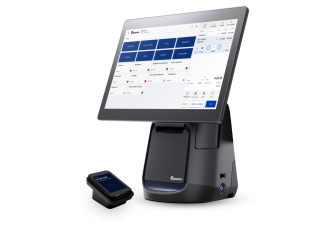Six Key Elements Any Restaurant Website Should Have
The Coronavirus crisis has altered how restaurants do business. Although we will eventually return to normal, many consumers will likely continue using online ordering, curbside pickup, and other services.
To ensure your business can outlast the pandemic and stay competitive during the rebound, you need a high-quality restaurant website. With the food delivery market projected to reach $97 billion in revenue by 2024, you can afford to miss out on these sales.
Additionally, a website is necessary for any restaurant. Even if you provide traditional dine-in or takeout, getting online improves your marketing, boosts reservation requests, and adds to your customer service.
What elements does a good restaurant website have?
Focusing on the following six items will ensure your website addresses consumer needs and drives more guests to your restaurant.
Mobile-Friendly, Responsive Design
Most people access the internet from a mobile device, so the majority of your web traffic will likely be from phones. A website not optimized to fit on any device provides poor user experience and will harm your reputation. People will associate your restaurant with being outdated and providing low service.
Responsive web design ensures your website is easy to use on phones, tablets, and computers of all screen sizes. Luckily with the Epos Now Online web builder, responsive design comes standard. You don’t need any technical web design skills to build a fully branded, optimised site with Epos Now. Simply choose a beautiful ready-made template, and use our drag-and-drop functionality to build a site that will generate repeat business.
Online Ordering
Online food ordering has exploded in popularity, so it is wise for restaurants to cater to this demand. Your website might not be the top source of delivery requests, but it will play a role in your marketing strategy.
If you manage food delivery yourself, make sure to place an online ordering form on your website. Some establishments can get away with using a simple Google Form, but you may need to use a web application if you have a complicated menu. With a tool like Epos Now Order and Pay, you can easily import your products and create a branded digital menu, accessible via QR code or custom URL. This acts as an extension of your website; customers can browse your menu, order, and pay straight from their phones, allowing you to use your website to bypass expensive food delivery apps, and reach your customers directly.
Reservation Integrations
Many customers turn to restaurant websites to reserve a table. Even if you have a reservations page on your site, make sure it is easy to find and use. Place a link to it at the top of your home page is often the best approach.
Although there are countless apps for collecting reservations, the simplest solution is having them sent directly to your POS. With programs like [FIND ONE!], all reservations will go to your Epos Now system so you can quickly greet and seat guests.
Some restaurants require a deposit to take reservations. Epos Now has a convenient way to take table deposits before they arrive.
Digital Menu
Too many restaurants post a PDF copy of their menus online. Not only do mobile users have to download these PDFs to see them, but they are often outdated. Old menus frequently have wrong prices, incorrect items, and even old addresses. All this only confuses your customers and encourages them not to buy from you.
It is better to post a digital menu that you routinely update. It doesn’t have to be anything fancy — even a basic web page will do.
However, the more you invest in your menu, the more appealing you can appear. Include images, detailed descriptions, and links to order all help you sell more.
Contact information and map
While you definitely need a Google My Business listing to help people find you, your website is often the go-to source for contact information. Whether you have a dedicated contact page or include your details in your footer, it must be on your site.
For the best results, make sure you optimize your contact details with the right links. A phone number should have a tel link so users can simply tap the number to call. Emails should have “mailto:” links for the same reason.
Best of all, use a Google Maps embed to show customers where you are and how to get there. With this, mobile users can quickly get directions, making it that much easier to buy from you.
Lead forms to grow your email list
Marketing is crucial for staying relevant online. Growing your email list is a crucial part of keeping in touch with your customers. Not only are emails proven to help sell more, but they keep your brand top of mind.
Most people do not want to give away their contact information for nothing, so make sure to create appealing lead forms and offer some type of freebie. For example, you can offer a free appetizer or free delivery in return for joining your email list.
Where you place this form matters. Don’t make it an annoying pop up, nor should you hide it away in your footer. Instead, place your sign up form along the side of the page, within content, or even right under your header.




